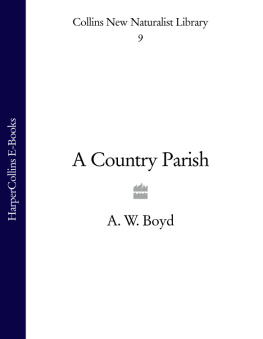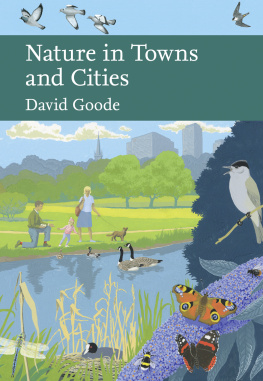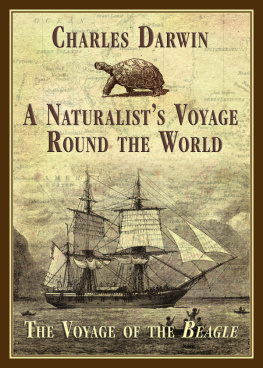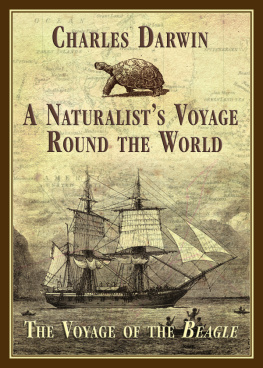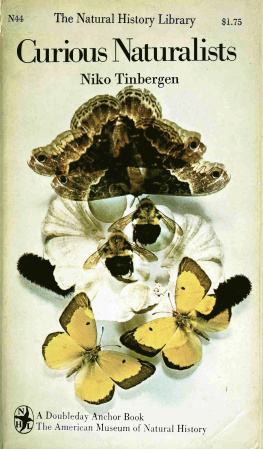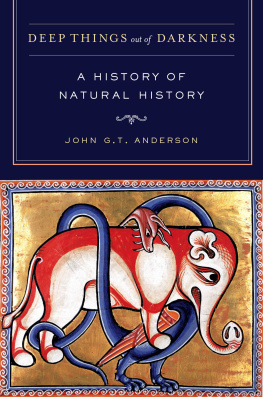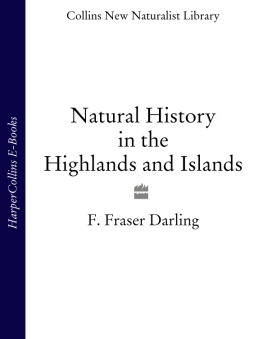THE NEW NATURALIST LIBRARY
BOOKS AND
NATURALISTS
DAVID ELLISTON ALLEN


Collins
To the memory of Gavin Bridson (19362008) and Richard Freeman (19151986) to whose decades of meticulous groundwork this book owes so much
Contents
A NY SERIES OF books on British natural history cannot fail to acknowledge its debt to the long tradition of naturalists and their writings for which Britain is almost unique. It was inevitable, therefore, that from the birth of the series the New Naturalist authors have been particularly conscious of this inheritance. Indeed, the first chapter of the first volume in the Series, E. B. Fords Butterflies, is devoted to a history of British entomology. Similarly, the second chapter of Wild Flowers is a scholarly history of British botany by John Gilmour. It has long been an ambition of the Editors to produce a volume celebrating the old naturalists and their contribution to the scientific, social and literary culture of the British islands.
David Elliston Allen is uniquely qualified to contribute this important addition to the series. Historian and botanist, he studied Archaeology and Anthropology at Cambridge whilst a long interest in field botany led to the presidency of the Botanical Society of the British Isles and his election as an honorary member. He is also a past president of the Society for the History of Natural History by whom he was awarded the Founders Medal for outstanding contributions to the study of the history of natural history.
Anyone who has read his The Naturalist in Britain (Princeton University Press, 1994) will not be surprised to find that Books and Naturalists is as much a social history of natural history publishing as it is the story of British natural history. Indeed, for the first time, the critical role of the publishers, and their not always harmonious relations with the naturalist authors, is explored and revealed. Given the size of the literature, it was inevitable that difficult decisions have had to be taken relating to scope and about what to retain and what to omit. David Elliston Allen discusses these thorny issues in his Foreword. The prime focus of the book has had to be those naturalists who have made major contributions to the discovery and description of Britains natural history and on our islands fauna and flora. One omission that may strike the reader is any major reference to Charles Darwin. Notwithstanding the importance of Darwins prodigious output, the evidence base for his ideas was drawn worldwide and was not exclusively British. Furthermore, the recent 200th anniversary of his birth and the 150th anniversary of the publication of the Origin of Species has resulted in the appearance of several new works that cover a similar theme. Rather than duplicating this, it was felt that the space that would have been needed to do justice to a review of Darwins contribution to British natural history would be better used on less familiar material.
We are delighted to welcome this fascinating, but at the same time scholarly, addition to the series.
CHAPTER 1
Books and Naturalists
O F ALL THE MANY pursuits and studies that have the outdoors as their principal focus, natural history must surely be without rival in the extent to which it depends on booksand always has done. Unless the different kinds of plants and animals encountered in the wild can be told apart, and, for preference, mentally pigeonholed with a name, the subject could not exist. Without the identifying of its particulars nature remains a purely sensuous experience. Wherever a fauna or flora has been investigated with reasonable thoroughness, there must be a good chance that every one of these particulars has been distinguished, described and dubbed with at least one lasting and widely used designation. Ideally, that will consist of a genus and a species, enabling the plant or animal concerned to be located, if wished, in the unique slot assigned to it in the overall scientific scheme of things; in many cases, though, there will also be a name or names acquired by it over the years in the vernacular, which can serve instead or as an additional label. The natural world presents itself in such a speedily overwhelming diversity that the limit to the number of recognisable entities and their names that the mind can accommodate is reached all too soon. In order to go beyond that limit, or to have ones memory jogged at will, it is consequently essential to have works of reference, some filled with descriptions of a greater or lesser degree of completeness and with or without accompanying illustrations, others lists of what has been recorded from particular areas and of the parts or places within those that appear to be richest in potential.
Not quite all naturalists regard such basic working tools as an altogether unmixed blessing. One of Irelands greatest all-rounders, A. W. Stelfox, came to deplore the existence of popular guides and handbooks as a class, convinced that they did more harm than good, with their commonly all-too-brief descriptions, poor figures and selective coverage giving rise to far too many misidentifications on the part of the inexperienced. A one-time librarian at the American Museum of Natural History even made a practice of hiding such works from the members of its staff, contending that those who know their stuff should have no need to look things up. But extreme views like these are the privilege of perfectionists, who can hardly expect most others to share them.
Those who do have recourse to books to identify what they find do not necessarily have to be able to read them, let alone understand the technical terms of which they often consist so very largely. Some of the artisan naturalists who were such a well-known feature of Englands northwest in the eighteenth centurys later years were so barely literate that, in order to put names to wild flowers they came across, they were all-dependent on a book with good illustrationsand, in some cases, for want of anything more recent, that was a battered copy of an antique herbal. There was one naturalist at that period, a certain John Gough of Kendal, who was not only unable to read, but could not even see: completely blind since the age of three, he developed a remarkable flair for identifying plants by using his tongue and his fingers.
If there have always been the rare one or two in the ranks of natural history for whom reference books serve no useful purpose, at the opposite extreme there are some for whom they have made all the difference. In my younger days, recalled Worcestershires Edwin Lees of the nineteenth centurys earliest years, it was difficult to obtain instruction in any department of Natural History, for illustrated books were rare or inaccessible But when at last knowledge was attainable, it was like the discovery of a treasure that required years to count. With that first knowledge, dating from the first determined plant and insect, came a flood of enthusiasm, leading to unnumbered rambles and explorations. Arthur Patterson, the self-taught naturalist of Norfolks Broadland, experienced a similar light-bulb moment. At the age of eight he expended his total savings of just twopence on a copy of Edward Jesses Gleanings in Natural History, and was so taken with it that he proceeded to learn all of the lines of it by heart. They ate into me like a fever: it gave me a passion for naturea passion which was to stay with him for life.
In the reminiscences of other early naturalists sudden conversions of that kind feature much less usually than a more purely intellectual yearning that finds the acquisition of one book in particular as its focus. If that involves a struggle against adversity, financial or physical, the acquisition is all the more momentous. The story that Thomas Horsefield, a Lancashire weaver, had to tell is typical. After coming across the classes of the Linnaean system for the first time in a book borrowed by his father from a library (James Lees
Next page

